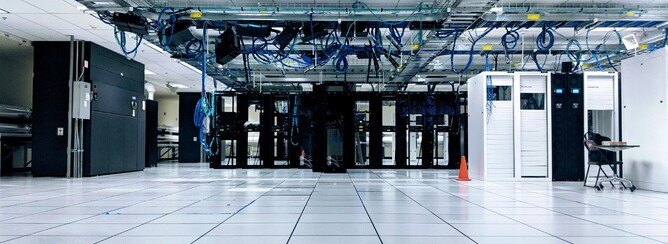TL;DR: Cloud Computing refers to software which runs in the internet and utilises on-demand computer resources. The software can be various things, e.g. websites, web applications, or processing various data. This software is not limited to one server, and can even be spread over multiple data centres (Clouds).
In our introduction to the Cloud we briefly talked about a service in the Cloud which is Cloud Storage. The one we're going to talk about today is particular popular amongst web developers and enterprises that work in this sector. It’s called Cloud Computing. But let's go back a few years before Cloud Computing was a thing.
The old fashioned way of running software in the internet
Before Cloud Computing was being made famous by Google, Amazon, and Co. the task of running software in the internet took more time and needed more work. A computer with a good internet connection and enough bandwidth was essential, and was called a server. So with that server you had the software available 24/7, which could be used by multiple people at the same time. That’s the hardware requirements but this only gets you so far.
Next thing to consider is the software you need to run on that server. Are you looking to host a simple website, run a more complex web application, setting up an email server, or something else? All these things need to be thought of before starting your endeavour. This, by the way, used to be the job of a server administrator.
The new way of running software in the internet
These prerequisites are moving into the background more and more because of Cloud Computing. Without any question, it's much easier today for a person without experience to get their software to run in the internet. Providers of Cloud Computing, like AWS, Google Cloud, Microsoft Azure, Digitialocean, and some more, make it very easy to set up software in the cloud. They all provide the infrastructure (hardware) requirements we spoke about earlier. You only bring your software. The details can be complex and vary from provider to provider of course. But that's a topic for another post.
There are PCs in the Cloud as well
But not only applications can make use of Cloud Computing, as you can run whole PCs in the Cloud as well. For example, we @ Totally Nerdy Ltd love the Shadow PC. We almost solely work on Apple hardware, but for some tasks we're required to have a Windows PC available. That's when we start up our Windows 10 PCs in the Cloud and connect them to our devices via some kind of terminal. Then a local MacBook sends its input signals, whether they come from keyboard, mouse or game controller, to the remote machine and receives back the video signal.
We hope this blog post gave you a bit more information about what Cloud Computing is and what it does. Please like and share it.
Thank you very much.
Photo by Taylor Vick on Unsplash

